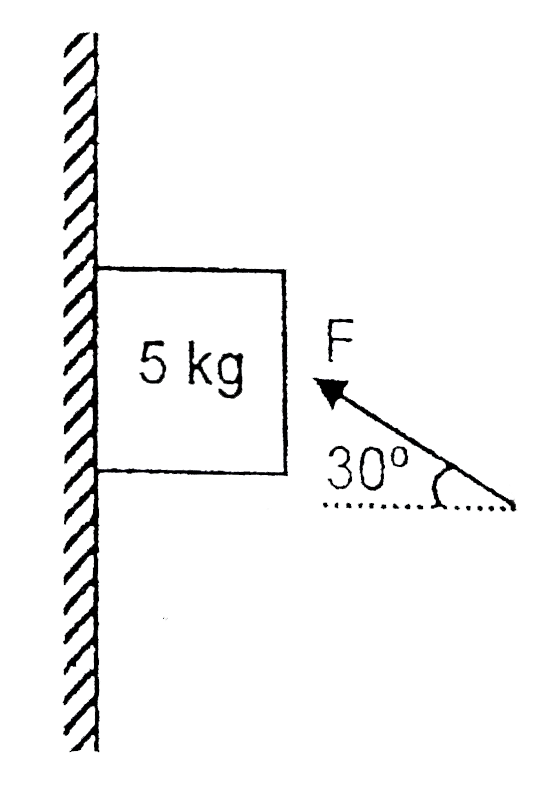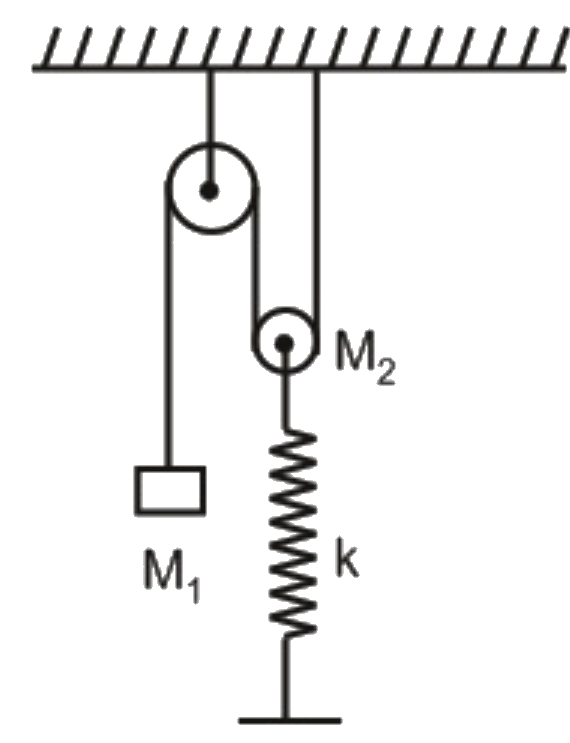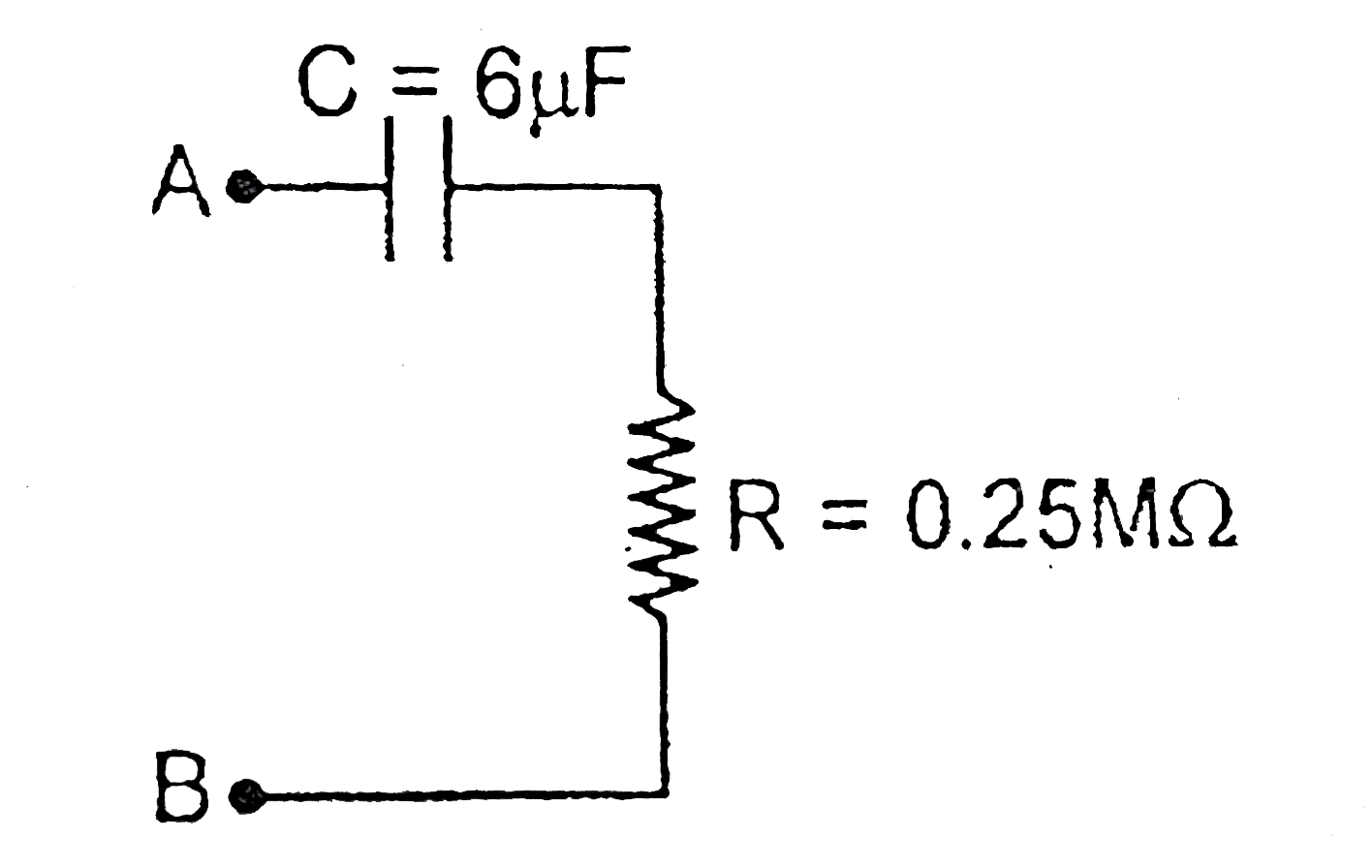When two particles A and B are at point O, A is moving with a constant velocity 50 m/s , while B is not moving. But B possesses a constant acceleration of 10 m/s2 . After how much time they will be at a distance of 125 m ?
5 sec
5(1+√2) sec
10 sec.
10(√2+1) sec
The correct Answer is:A, B
Displacement of particle 1 after time t,
x1=50t
Displacement of particle 2 after time t,
x2=12×10×t2=5t2
According to question,
5t2−50t=125 or 50t−50t2=125
⇒t2−10t−25=0 or t2−10t+25=0
⇒t=5(1+√2) or t2=5sec.
Topper's Solved these Questions
- TEST PAPERSBook:RESONANCE ENGLISHChapter:TEST PAPERSExercise:PART - II PHYSICS
Explore 105 Videos
- TEST PAPERSBook:RESONANCE ENGLISHChapter:TEST PAPERSExercise:PART - II PHYSICS SEC - 1
Explore 15 Videos
- SIMPLE HARMONIC MOTION Book:RESONANCE ENGLISHChapter:SIMPLE HARMONIC MOTION Exercise:Advanced Level Problems
Explore 13 Videos
- TEST SERIESBook:RESONANCE ENGLISHChapter:TEST SERIESExercise:PHYSICS
Explore 130 Videos
Similar Questions
A force F is applied on a block of mass 5kg as shown in figure. Co-efficient of friction between the wall and clock is √32.(g=10m/s2)

Select correct option(s)
View SolutionIf →A=−ˆi+xˆj−3ˆk and →B=2ˆi−ˆk then the value(s) of x for which the dot product of ¯¯¯A & ¯¯¯B is equal to unity :
View SolutionA block of mass M1 is constrained to move along with a moveable pulley of mass M2 which is connected to a sprin of force constant k, as shown in the figure. If the mass of the fixed pulley is negligible and friction is absent everywhere, then the period of small oscillations of the system is

View SolutionA time varying voltage is applied across A & B such that voltage across capacitor is given by VC=2sin2t. What is maximum potential difference across the reistance?

View SolutionTwo particles A and B are initially 40 m apart, A is behind B . Particle A is moving with uniform velocity of 10 m s^(-1) towared B . Particle B starts moving away from A with constant acceleration of 2 m s^(-1) . The time which there is a minimum distance between the two is .
View SolutionTwo particles A and B are initially 40mapart, A is behind B. Particle A is moving with uniform velocity of 10ms−1 towared B. Particle B starts moving away from A with constant acceleration of 2ms−1.
The minimum distance between the two is .
View SolutionTwo particles , one with constant velocity 50m/s and the other with uniform acceleration 10m/s−2. Start moving simultaneously from the same place in the same direction. They will be at a distance of 125m other after.
View SolutionIf in the previous problem, particle A moves with constant acceleration 4 m//s^(2) with initial speed 5 m//s and B moves with uniform speed 12 m//s , when and where the particle meet?
View SolutionA particle starts from rest and moves with a constant acceleration of 4m/s2 for 10s, then it moves under constant seceleration and stops in 20s. Find (a) the maximum velocity attained by the particle (b) the total distance traveled and (c ) the distance/distances from the origin, when the particle is moving at half the maximum velocity.
View SolutionTwo particles P and Q simultaneously start moving from point A with velocities 15 m//s and 20 m//s respectively. The two particles move with acceleration equal in magnitude but opposite in direction. When P overtakes Q and B then its velocity is 30 m//s the velocity of Q at point B will be
View SolutionTwo particles A and B separated by 10 m at time t=0 are moving uniformly. A is moving along line AB at a constant velocity of 4m/s and B is moving perpendicular to the velocity of A at a constant velocity of 5m/s. After what time the two particles will be nearest to each other?

View Solution(a) A particle is moving eastward with a velocity of 5 m/s. If in 10 s the velocity changes by 5m/s northwards. What is the average acceleration in this time ?
(b) What is the retardation of a moving particle if the relation between time and position is, t=Ax2+Bx? (where A and B are appropriate constants)
View SolutionWhen two particeles A and B are at point O, A is moving with a constant velocity 50 m/s , whle B is not moving. But B possesses a constant acceleration of 10 m/ s^(2) . After how much time they will be at a distance of 125 m ?
View SolutionA car moving with constant acceleration crosses two points A and B with velocities 10 m/s and 20 m/s in its path. Find the velocity of the car midway between A and B. (in m/s).
View SolutionA car moving with constant acceleration crosses two points A and B with velocities 10 m/s and 20 m/s in its path. Find the velocity of the car midway between A and B. (in m/s).
View SolutionA car moving with constant acceleration crosses two points A and B with velocities 10 m/s and 20 m/s in its path. Find the velocity of the car midway between A and B. (in m/s).
View Solution
